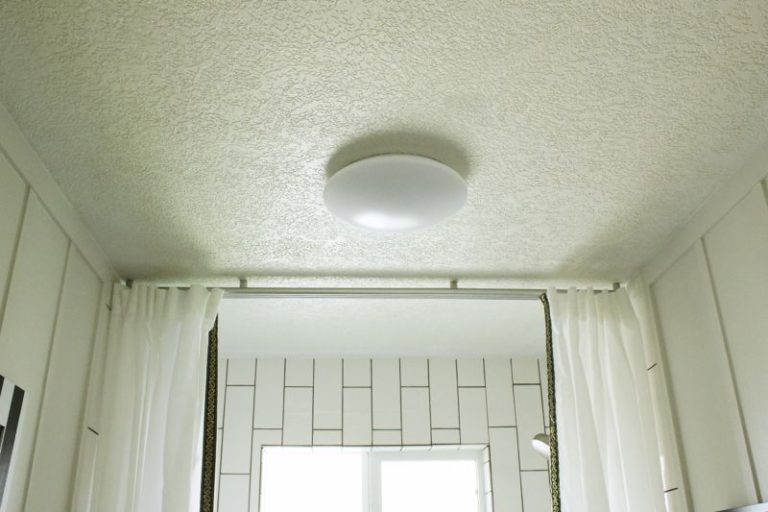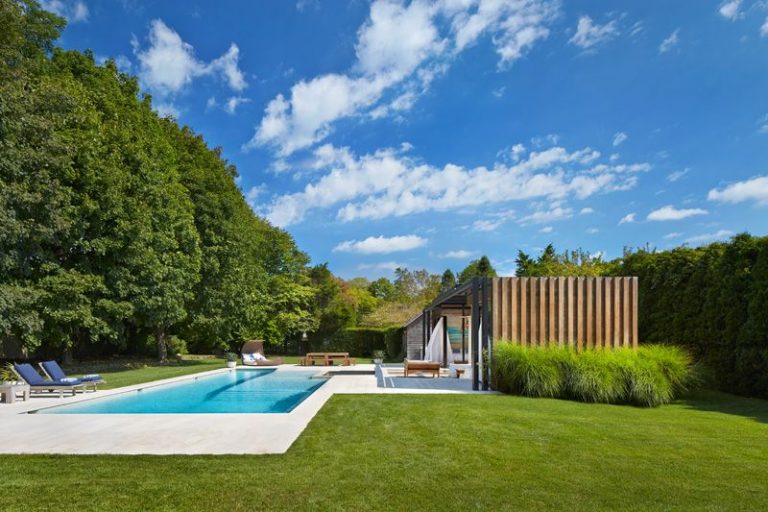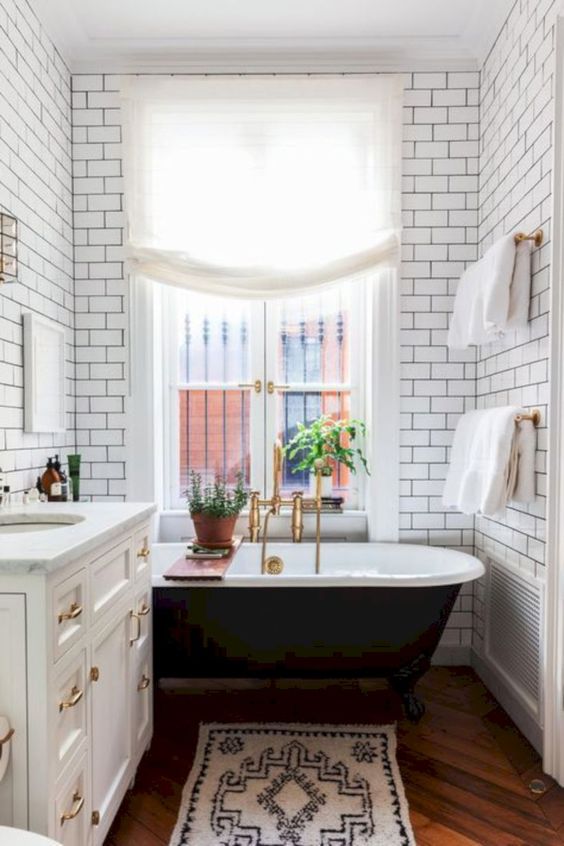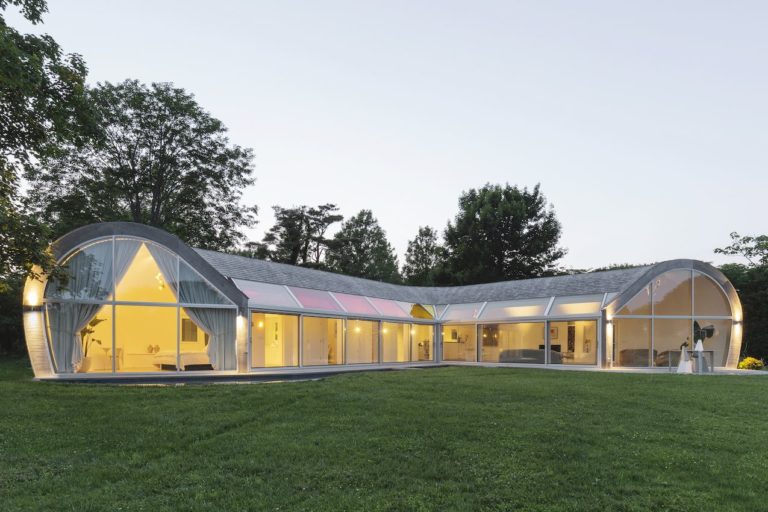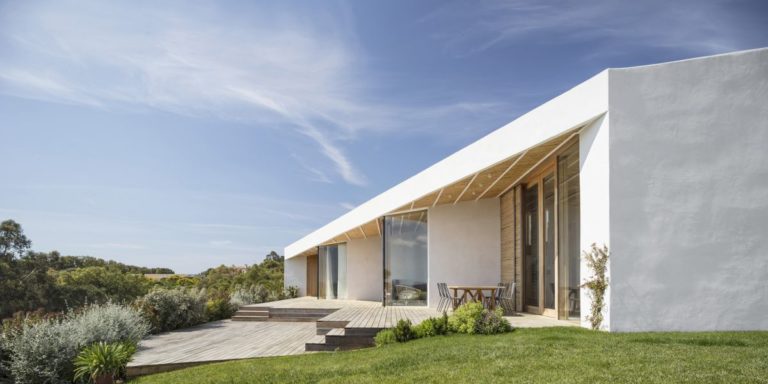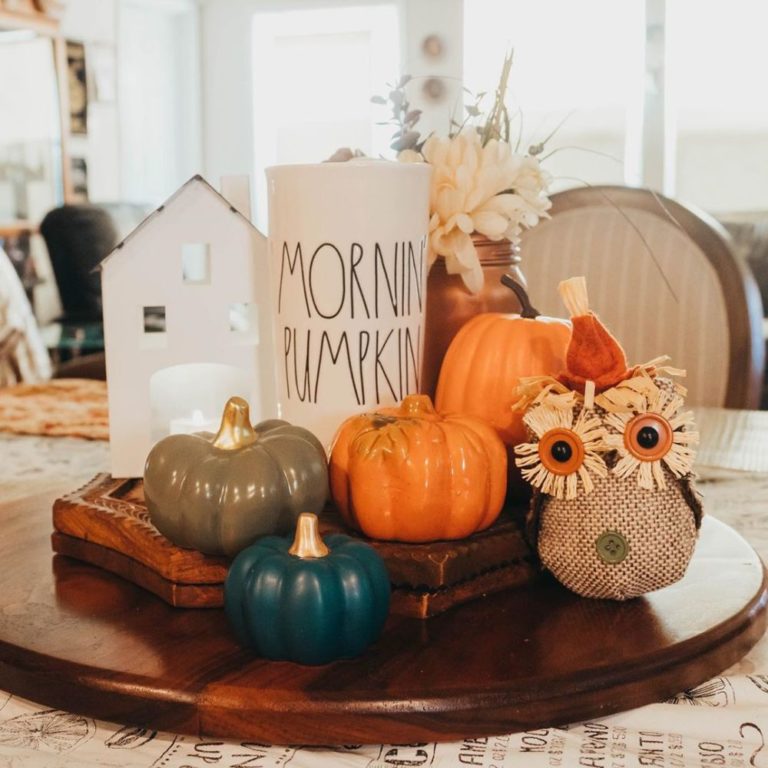Everything You Need To Know To DIY a Bathroom Renovation
The cost of having a bathroom remodeled can be truly frightening to the wallet. According to the National Kitchen and Bath Association, the average bathroom renovation cost was $11,364 in 2016, and labor accounts for approximately 20 percent of the cost. Of course, about one-third of homeowners that the organization surveyed spent more than $30,000 — and that was three years ago! This type of cost is what drives many families to do this themselves. Assuming that the bathroom is a standard type, there’s no reason that an experienced DIY-er can’t handle a partial or full bathroom renovation. Homedit has the information and instructions to walk you through the common tasks you’ll have to do, from the most major to the smallest details. So, grab your hammer and grout and let’s get started.
Remove the Tile Tub Surround
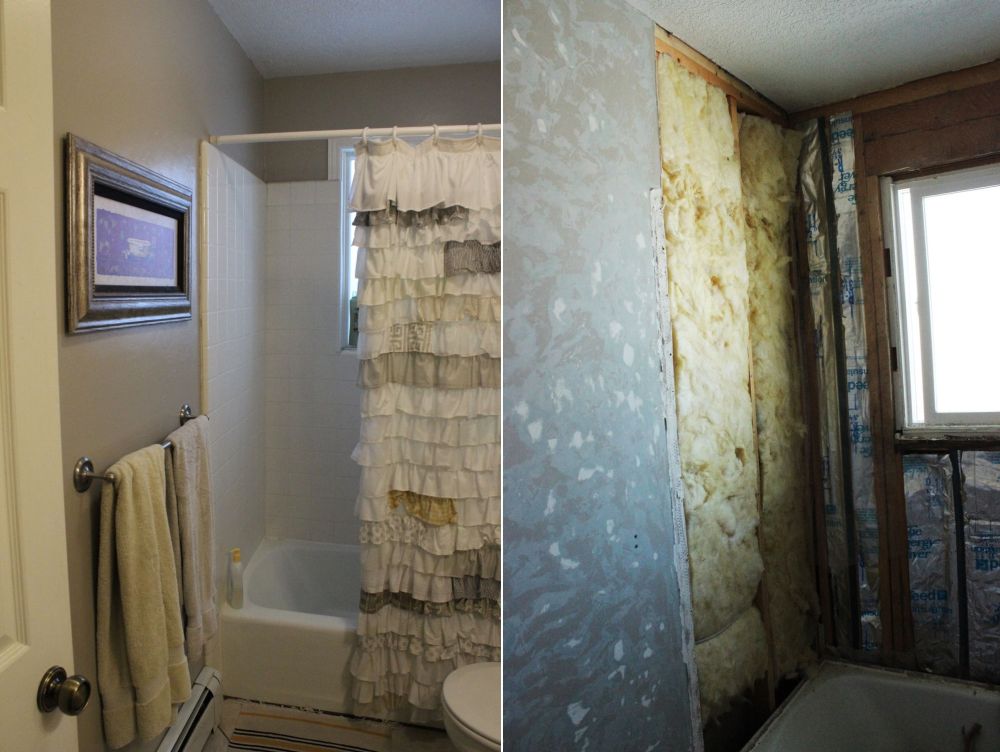
Before you can start adding, first you have to subtract. A significant part of the work in a bathroom renovation is removing the parts that already exist. One of the most common bathroom renovation projects is changing the tile around the bathtub and the first step is removing the existing tile tub surround. This can be one of the things that can present surprises in the form of extra costs because you never know what you’ll find in the wall or around the plumbing. If you’ve watched any remodeling shows on television, you know that this happens all the time with older homes. Here, the homeowners want to keep the existing tub but replace the tile surround, extending it all the way to the ceiling. This part of the work is also a big commitment to the project because it means that you (or someone you end up hiring) will have to finish it.
Prepare the Surround for Tile
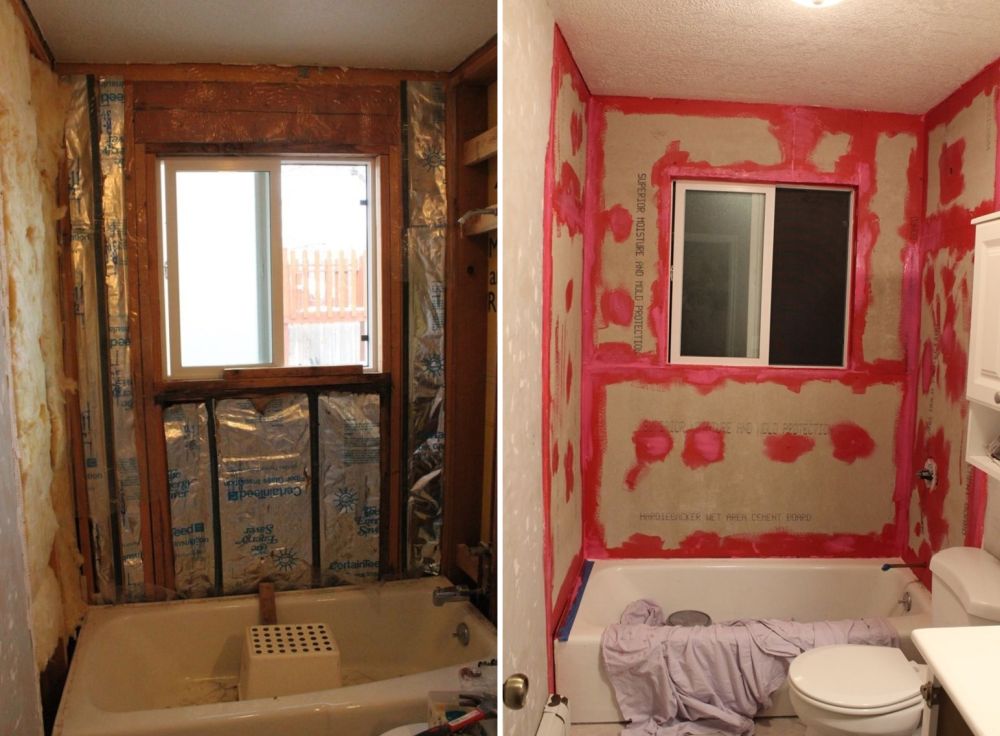
Once you’ve removed the tub surround down to the studs and insulation, and dealt with any unexpected mold, leaks or other surprises, the walls have to be properly prepared for the tile. This step is critical in a bathroom renovation and the way exterior insulated walls are prepared is a little different from how interior, uninsulated ones are done. If you have a window in the tub surround area, it also has special concerns. Regardless, you’ll need to install plastic sheeting as well as backerboard for moisture and mold prevention. There are also steps required to seal the seams and any cracks. Throughout this process, you’ll want to lay a protective tarp or other covering over your tub to protect it from scratches, building materials and dust.
Lay the Tile
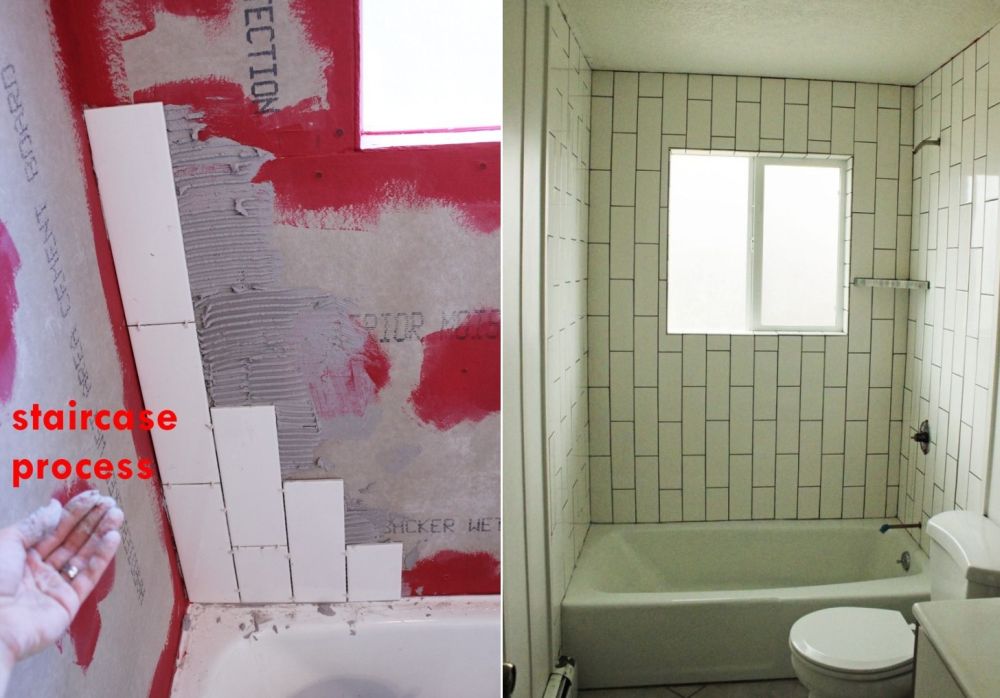
Tiling a bathtub surround in a bathroom renovation might be a lot bigger job than installing a backsplash, but the process and skills are pretty much the same. Before you start slapping tiles on the wall, it’s key to do some measuring beforehand to determine whether or not you’ll need tile strips to complete the job. This tiling tutorial includes a couple of choices for how you measure and apply the tile, along with how apply the thinset that will hold the tiles and use spacers to make sure you have a consistent space between all of the tiles.
Wet Cutting Tile
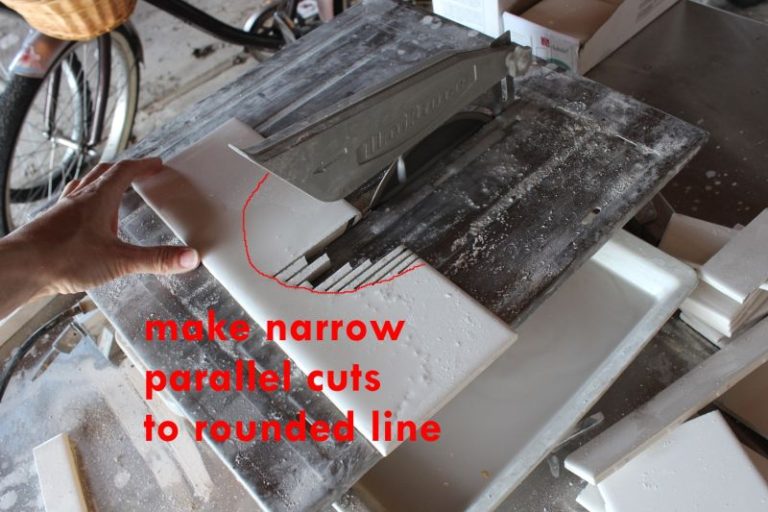
When installing tile, invariably you will need to cut some pieces to fit around plumbing, a corner or other protrusion. While tile is a fabulous material for the bathroom, it requires some special tools and skills for proper cutting: the tile wet saw. This kind of saw will let you cut shapes quickly and efficiently because while it cuts it sprays water to keep the dust down and cutting more accurate. It is run a little differently from a regular saw, so you’ll want to learn how to use it before you actually start the bathroom renovation tiling project.
Adding a Corner Shelf
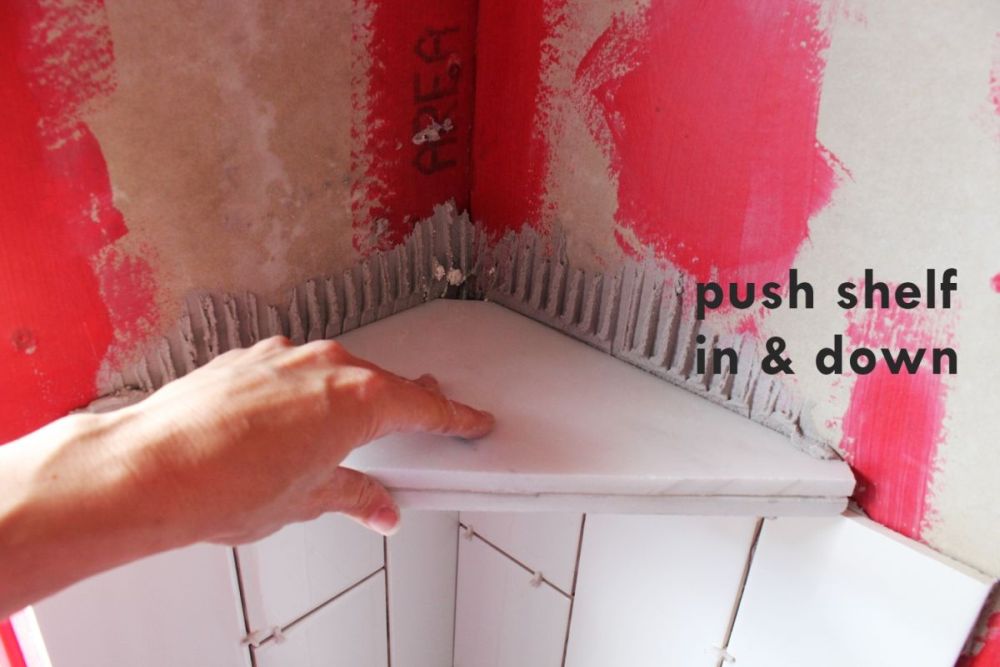
One of the handiest bathroom renovation ideas in the shower is a corner shelf because it gives you somewhere to park your shower products. They can be a great space saver, especially for some tub and shower surrounds. In cases where you can’t have an inset shower niche shelf because of an exterior wall or a wall full of plumbing, installing a corner shelf is an ideal choice. Although you can certainly purchase a pre-fabricated corner shelf, it’s pretty simple to make your own out of some spare tiles so you can have a perfect match with the rest of the tiling. In fact, once you’re comfortable with cutting tile, it’s quite simple to add one to your tub or shower surround.
Raising the Shower Head
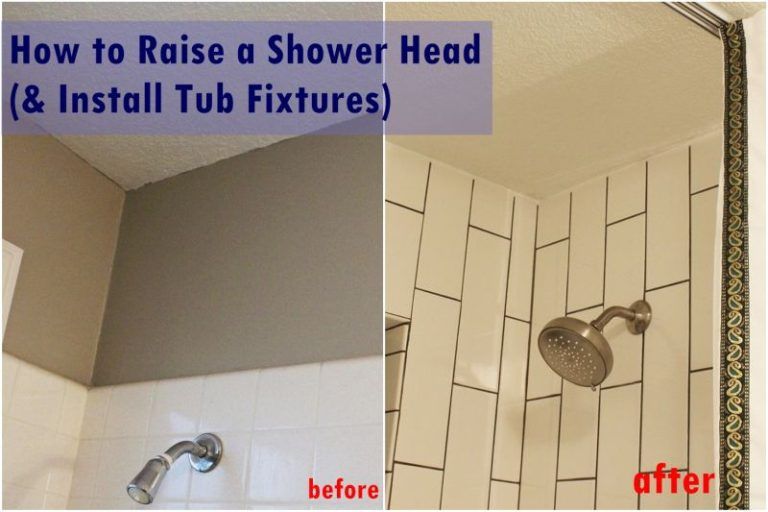
If you’re updating an older bathroom, it’s quite likely you’ll want to move the shower head higher. The old standard for shower head height was 72 inches at the base in the wall, which is too short for many people. This is especially true if you want to install a larger shower head or even a rainfall shower head. This part of the project is a little more advanced than some of the more basic DIY steps in this process, but our tutorial will lay out all the steps and measurements for you.
Grouting, Sealing and Caulking
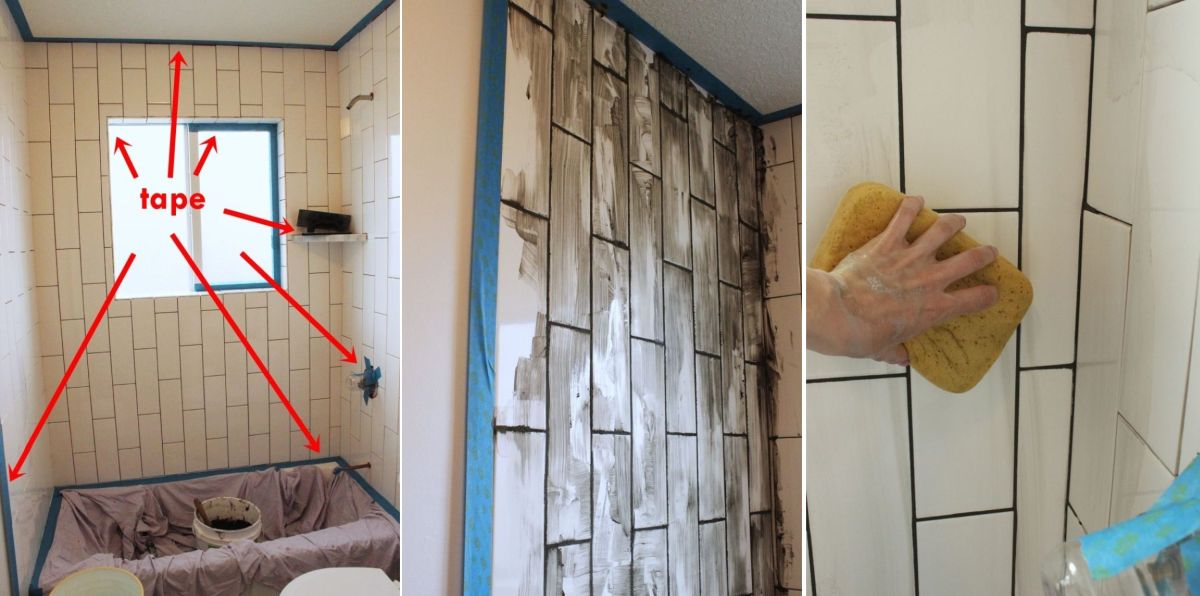
Once all the main elements are in and all the tile has been set, it’s time to fill all the gaps and make the entire area impervious to water. Applying the grout is a very important part of the process because not only does grout complete the look of the surround, it fills the spaces and keeps the water from penetrating the walls. Once in place, the grout has to be sealed to preserve the color and help prevent mold and mildew. Caulking is the last step and fills in the spaces that are along the edge of the tub or other gaps.
Smoothing a Venetian Plaster Wall
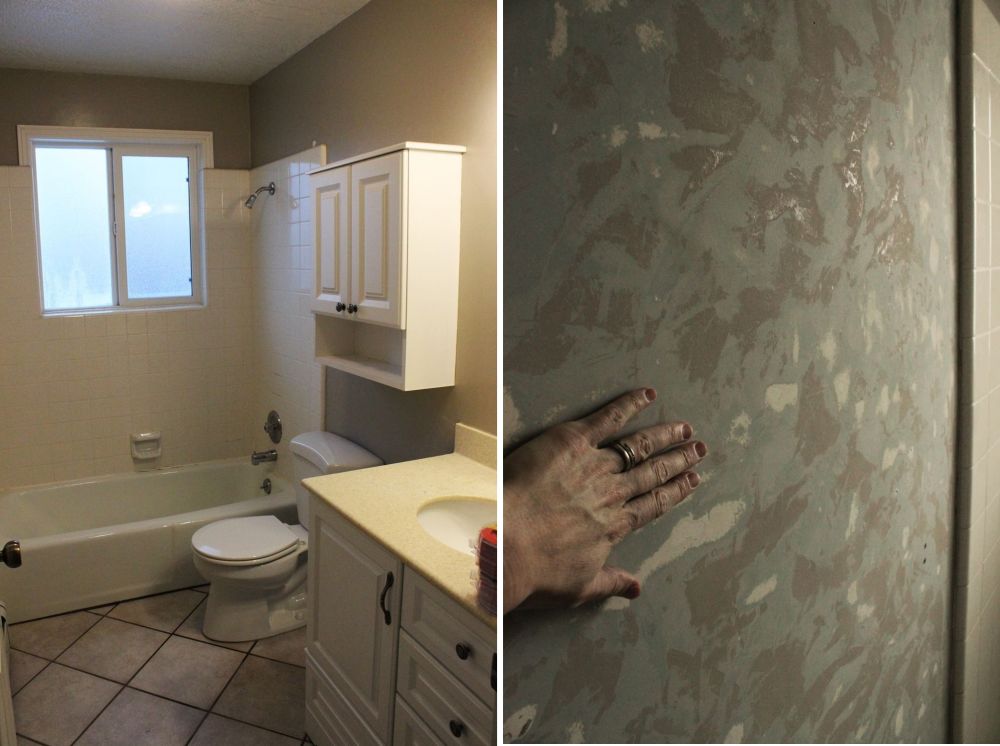
Some older homes have Venetian plaster walls, which have a texture that can be undesirable in a modern bathroom design. If this is the case, there is a process for smoothing the walls. That said, it requires a good bit of elbow grease, time and perseverance. Smoothing this type of wall can also be a rather messy job, so cleaning up is a big part of the job too. It’s worth it, however, because doing it yourself can really help hold down the bathroom renovation cost.
Faux Marble Concrete Countertop

Few people wouldn’t want a marble countertop, but many don’t have the budget for one. That said. there’s a DIY option to create a faux marble countertop from concrete. With a little time and effort, it’s possible to convert an existing countertop into one with a marble look for just a fraction of the cost. There are quite a few steps, but the result is amazing — and really helps hold down the bathroom renovation cost
Remove and Install a Bathroom Faucet

Removing and installing a bathroom faucet is one of the easier tasks in a bathroom renovation. The tutorial provides all the steps for getting rid of the old faucet and putting in a new one. And, if you’ve created the faux marble countertop and want to switch to a single-hole model, it explains how to do that too. From pulling out the stopper mechanism to hooking up the eater lines, all the details are included.
Upgrade a Standard Vanity
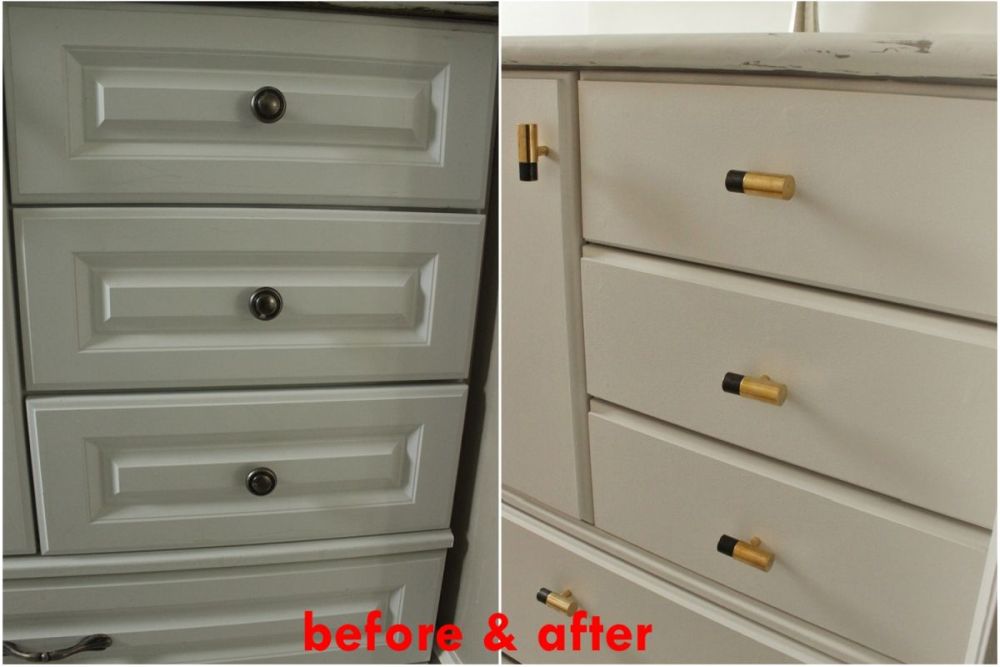
Even a fresh new home might need some bathroom upgrades because most are outfitted with standard vanities that look pretty boring. There are a number of ways to change up your bathroom vanity and make it look more stylish and add custom features without replacing the entire thing. From adding custom inserts to adding new facing and swapping out hardware, they are all ways to make a basic vanity look super chic at a lower cost than buying and installing a new vanity.
Add a Ceiling-Mounted Shower Curtain
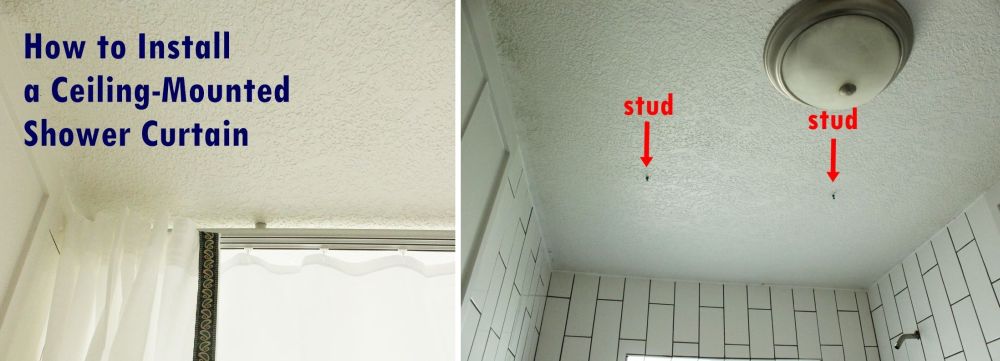
One of the most annoying elements in the bathroom can be the shower curtain rod — it can sag, fall or easily be pulled down. A very stylish way to solve these issues is to install a ceiling-mounted curtain rod that uses tracks instead of a rod and rings. This style of curtain also makes the bathroom look taller, without that typical large gap between the rod and the ceiling. The installation is rather straightforward because these rods typically come as a set.
Jazz up With a Custom DIY Shower Curtain
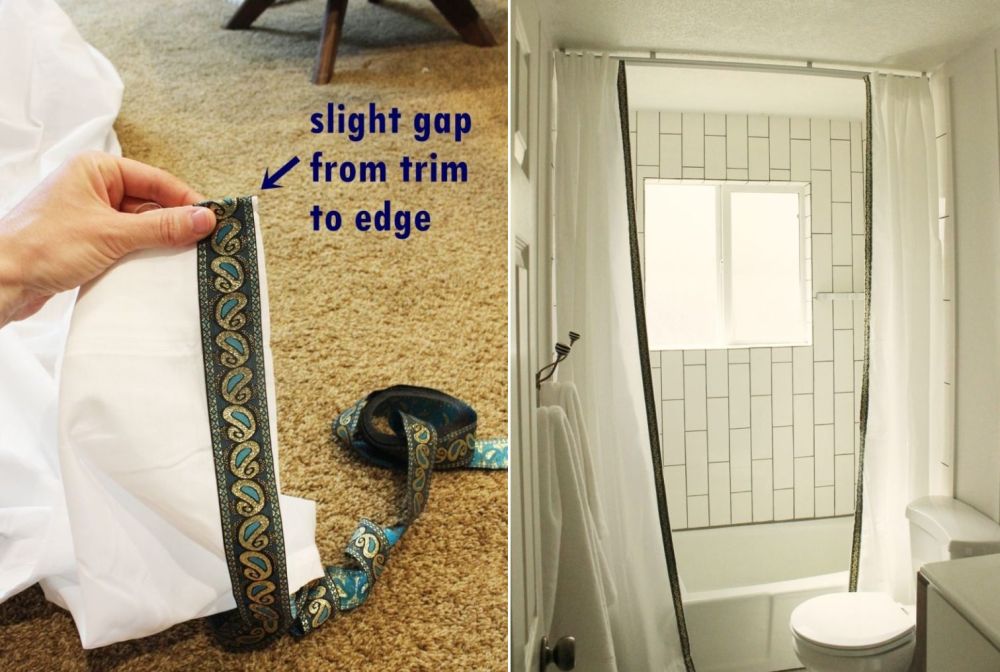
Fancy shower curtains generally also come with a pretty fancy price. Instead of paying extra for trim and embellishments, jazz up your basic shower curtain with this DIY technique for a custom shower curtain. Start with any plain shower curtain, grab some trim and stitch up a quick and very special shower curtain. It will add some extra personality to a space where you spend plenty of time — and many guests will likely see. Super impressive!
Install a Bathroom Mirror — Without Clips
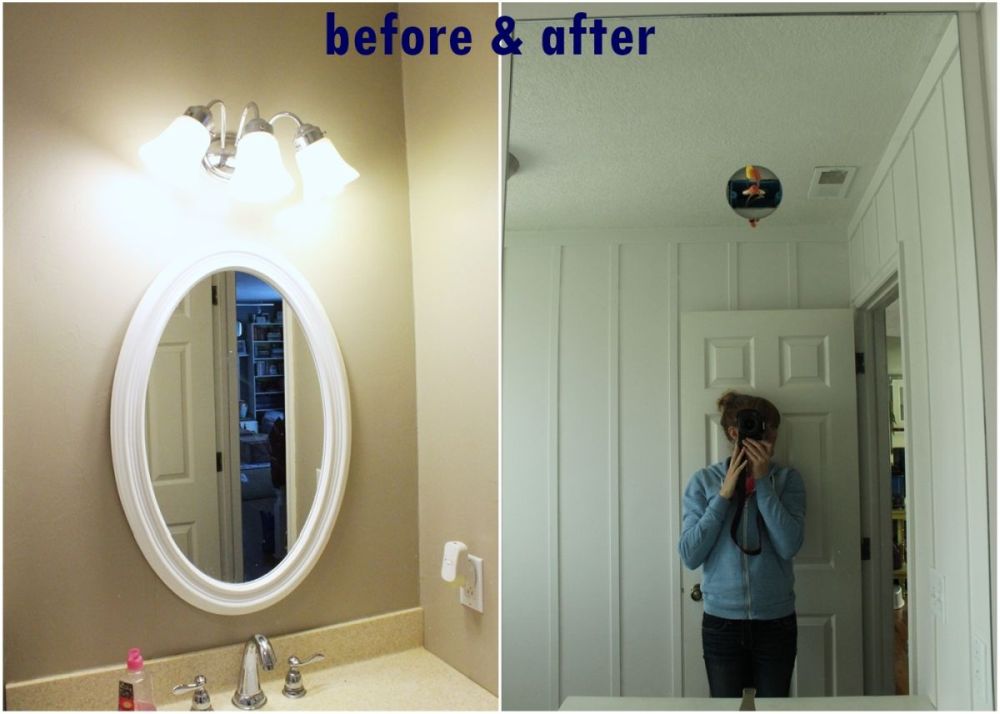
Most everyone has had one – a big frameless mirror installed by a builder that is held up by those ugly little plastic clips. While the big mirror might be desirable, the little visible bits holding it in place are not. It is possible to install a big bathroom mirror like a professional that will have a big impact and change the look of the bathroom. This is a great DIY bathroom renovation project that might, depending on the size of the mirror, require an extra set of hands because of its weight and the need for exacting placement.
Add a Shelf Above the Door

Storage space is always at a premium in the bathroom, especially if it is small. One overlooked area that can add a little extra space is the area above the door. Adding a shelf above the door is an easy DIY solution. Depending on the measurements of the bathroom, it might be possible to use a purchased shelf, but this tutorial on how to make your own custom shelf lets you tailor it to your space. Once you make this bathroom shelf, you might decide to do it in other rooms because it’s a really useful idea for small spaces.
Side Vanity Storage Unit
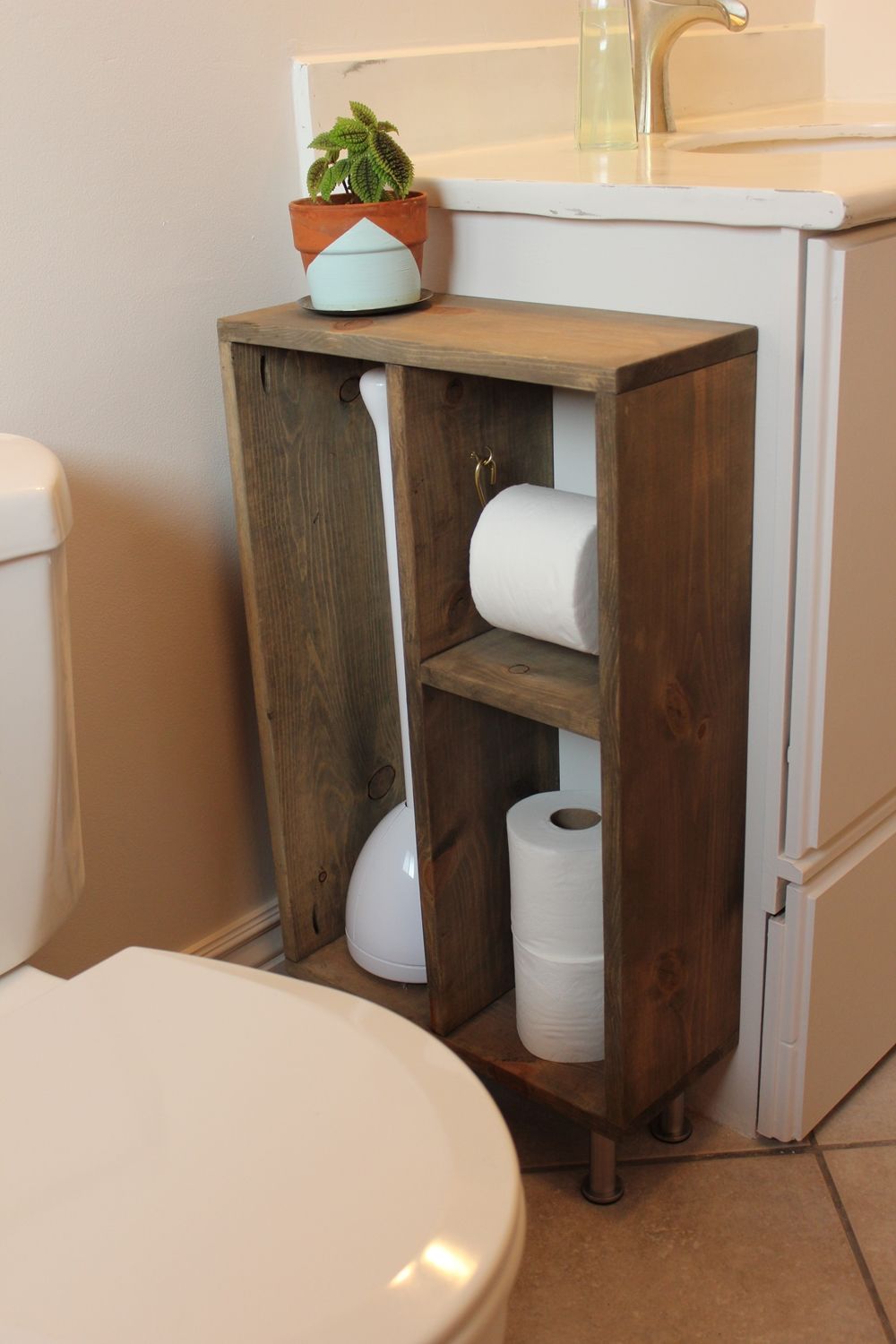
The bathroom necessarily requires items that you’d rather not store in prominent view, so a storage unit on the side of the vanity is a great solution. It lets you store items like rolls of toilet paper, the toilet brush and other items in easy reach but not at the center of attention when people walk into the bathroom. Make your own DIY side vanity storage unit to fit your individual space and needs. Smaller projects like these will add function and style to your overall bathroom renovation.
Brass Toilet Paper Holder

Truth be told, many people really dislike the design of basic toilet paper holders: Two ceramic posts and spring-loaded plastic cylinder. Really rather unattractive, yes? Instead, why not DIY your own simple brass toilet paper holder. It’s different, more stylish, and a perfect match for the custom side vanity shelf above.
Don’t Overlook the Details
Renovating the bathroom is a big job overall, but it’s critical to not overlook the small details. These are what elevates a basic bathroom to something more stylish. From the hardware to the accessories and the lighting, every element counts. Check out this list of some things that might need an upgrade and the DIY instructions on how to change things up.
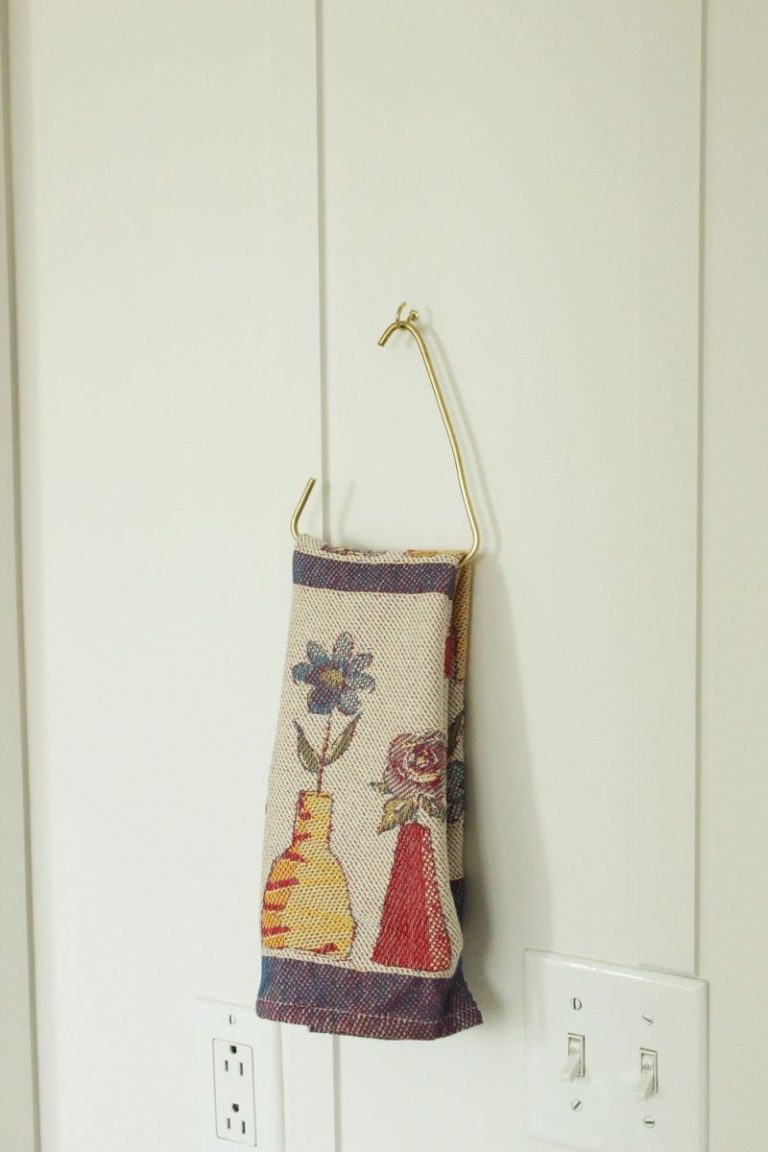
Now it’s time to step back and admire your great new bathroom renovation. It’s functional and looks amazing, so why not celebrate and have a leisurely bath or a hot shower? You deserve it after all that hard work!
The post Everything You Need To Know To DIY a Bathroom Renovation appeared first on Home Decorating Trends – Homedit.
